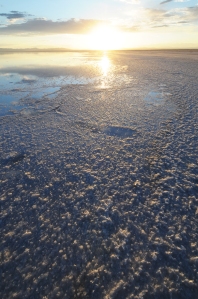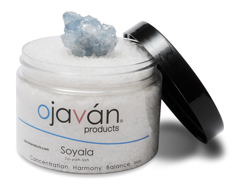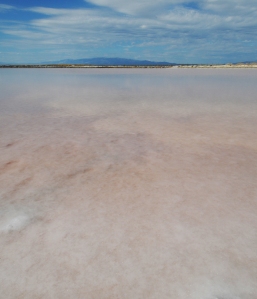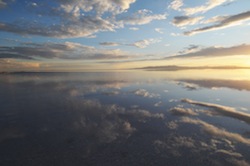Brrrrr, It’s cold, the wind torments us, and our skin feels like its been sanded with 20 grit sandpaper. How in the world do you escape this feeling? It’s well documented that during the winter months the moisturizer level in the air goes down, our skin feels itchy and just loses more and more moisture. It’s time to fight back against mother nature and take matters into our own hands, literally. Here are a few vital tips that will help stave off old man winter, the blahs, and keep your skin beautiful for what promises to be a wonderful spring, in two or three months. First: Soak away those winter blues with one of our aromatherapy mineral salt soak. Our high mineral in our concentrated salts fees your skin the over 70 trace minerals and elements that our skin so badly needs, scented with the perfect amount of pure essential oils, your soak can either relax, stimulate, and help your mind heal itself from the daily winter attacks. With six scents to choose from or our all natural un-scented salt soaks, you can choose the mood. Next, moisturize, moisturize, moisturize, your skin day and night. Don’t use any moisturizer or lotion that has water as its main ingredient, it wont last and you will feel and be dry faster than ever. All of our moisturizers and lotions start with pure organic aloe juice, helping to heal and moisturizer the way you should. Be moist, be happy, beat Old Man Winter at his own game, and do it at 10% off our regular prices. Use the code LH006 when checking out… You wont regret it….Beautiful skin naturally.
Wicked Winter Weather, and How to Maintain Moist Healthy Skin
JOJOBA OIL as a ingredient for skincare products
There are as many ingredients in products as there are products in the world today. What I thought would be important over the next few posts would be to talk about the ingredients we use and why. Many people to this day forget to turn the jar around and read what the ingredient list is, and if you do, Its alomost imposible to understand what the words are. I’d like to break it down, make it a little more simple to understand. We never hide our ingredients, and we never will.
One of our super ingredients is JOJOBA OIL..pronounced hohoba. First off, we only use 100% pure pesticide-free golden jojoba oil. It is processed in accordance with organic standards. It is pesticide, fungicide, and herbicide-free. So, dang good stuff. So what is jojoba oil and why use it in skincare products? Great question.
Simply, jojoba is actually a liquid wax derived from a jojoba seed. (Simmondsia chinensis) The molecular structure of jojoba oil is the closest to our own skin’s sebum, which allows it to be easily absorbed and to restore the skins natural oil balance without clogging pores. jojoba oil is non-allergenic and can be used on the most sensitive skin. Because jojoba oil will penatrate the skin, it is able to helps the skin retain moisture, keeping it supple and beautiful. Jojoba oil contains alpha, delta, and gamma tocopherols, all natural forms of the anti-oxidant, Vitamin E. Jojoba oil has other benifits that help skin, including antibacterial. anti-microbial, anti-inflammatory, antioxidant, anti-aging, anti-viral and free-radical fighting properties. Some have claimed that Jojoba oil is the best all around moisturizer and skin helper outer there is. We love it and use it in our Moisturizing body oil, our professional grade massage oil, our Facial moisturizer, and our Hair finishing serum. You will always find that we use only the best ingredients, and make the finest skin, body, and haircare products available.
Inch Loss Wrap
Inch loss wrapLet’s face it. There are plenty of us who are working hard and trying to exercise and lose a little or a lot. And then we hit the wall. It’s very hard to stay motivated and keep working when this happens. Well, we at Ojavan have that little something that can keep you motivated and moving forward. We have developed an inchloss wrap with our Ganabe essential oil and Mineral Mud from the Great Salt Lake. It is becoming available at a number of Spa’s and Wellness centers, and we will have a home version ready within a few weeks. This wonderful internal and external detoxifying wrap works with any type of body. Our results have been on highly athletic women and well as others who are working to just lose some inches and keep it off. Results have been from a 17 inch overall loss to a 5 inch loss. This process will help pull the toxins from the body and really cleanse you. The Mineral Mud tightens the skin to a beautiful glow. please clik on this link to see the results. One more way to be green, and Feed your Skin
It’s Tough being a little guy
Why do we have a hard time believing in skincare products and companies today? Is it because many have lied to us over the years? Is it because the claims they make are shallow? What about all the man-made harmful chemicals? It would be easy to list many more problems and become part of the nay-sayers club. But you know what? Ojavan doesn’t want to be that way. We are a small company with one main goal, and that is to simply be honest, and forthright with what we sell and the products we carry. There are a number of small honest companies out there with great products, but not a great deal of money to do the kind of advertising that they need to become profitable and to grow like they would like to. Ojavan is really in that same boat. Until people give us a chance, try the products, nothing happens. That’s why us “small” companies blog, Facebook, twitter, etc. Just hoping for that break to happen where we can be a great help to the people that want products that work, and are not harmful to the skin and body. This post is a big THUMBS UP to all the little guys and gals that are trying to make a difference out there. We salute you and are right there
behind you. The world just celebrated the 7th billion person being born. There are lots of people to talk to and share our stories with. Keep up the good work. Lets make this world a better and safer place to live, eat, raise a family, and just sit back and enjoy what the world gives us. Thanks, thanks to all who try just a little more.
Why a Bath can be good for you
In today’s world we always seem to be is a rush. Hurry, hurry, hurry, seems to be the watch word. We no longer take the time to “stop and smell the roses.” Well, here is a good reason to do just that. Stop, take a little time for you, after all you deserve it. One more thing, it’s going to be good for you and your skin. As stated before, our skin is the largest organ on or in the body, and sometimes its the most abused. If you have been reading the posts about trace minerals and elements you know how bad our body needs them to function properly. Well here is a chance to help your skin get what it needs to stay healthy and young-looking, while giving your mind and body the rest and rejuvenation it sorely needs. Just a few ounces of one of our salts in your bath water once or twice a week, will help feed your skin the trace minerals and elements it needs. The pure essential oils we use will work holistically to enhance your desired mood. Plus we have a bonus in each and every one of our salts, a crystal from the earth that will add to your bathing and holistic experience. All of this works in harmony to detoxify your body and prepare you for life. And above all, you deserve the break. It’s time to have your own Ojavan experience. You will want more. I promise you.
Trace Minerals & Elements
Two-time Nobel Prize winner Linus pauling has stated, “You can trace every sickness, every disease, every aliment to mineral deficiency.” If that is the case then we, as people should be looking for ways to ad these all important trace minerals and elements to our bodies. This ia an area where Ojavan can help. Our Npato, (meaning Radiant, in Sioux) Mineral Mud is created as the healing waters of the Great Salt Lake expand and evaporate allowing the minerals and salt to be absorbed into the mud below. This natural fusion of Great Salt Lake water and shoreline mud contains over 70 trace minerals and elements essential to healthy skin. The mineral mud is hand harvested and re-infused with concentrated GSL mineral water that natural processes have aged to perfection over crystal beds. By using this mud as a face or body mask you, cleanse the skin and remove impurities, you help heal the skin tissue, improve your blood circulation, it has anti aging benifits because of the trace minerals and elements. It detoxifies and tones the skin, and helps restore the skins pH balance. This mineral mud helps in alleviating a variety of skin conditions including, acne, psoroasis, eczema, and dry or oily skin. Why wait? Now is the time to star towards having the best skin possible.
Trace Minerals & Elements 2
As early as 480 BC Euripides in Iphigena in Tauris wrote, “The sea heals man’s illnesses”. Now flash forward a few thousand plus years. With all the research by scientists we now know that “sea” water or “inland sea” water contains the same trace minerals and elements that the human body has, only in a much more concentrated amount than that of the human body. Our bodies contain about 4% of these trace minerals and elements, But they activate such things as, building blocks of enzymes and hormones, equalizing pH, digestion, growth, and tissue regeneration, to name a few. They are indispensable for optimal functioning of a healthy body. With our body, and the visual part being the skin, researchers have found that when trace minerals and elements are absent, the epidermis loses its structure, or our skin begins to look wrinkled. and we say yech! Also, skin becomes fragile because of these deficiencies and offers an ideal terrain for the appearance of various disorders, like acne, psoriasis, eczema, dry skin and more. When trace minerals and elements are present, cohesion between cells is visible. Skin is strong and completely healthy, and many of the visual symptoms simply disappear. Tomorrow we discuss, how to re-infuse your skin with the trace minerals and elements we so need.
Trace Minerals and Elements
Do you want healthy, radiant, beautiful skin? Sure you do. Did you know that there is over 70 trace minerals and elements in your body that trigger thousands of essential enzyme reactions that keep your skin healthy and beautiful? Now is the time for you to take charge of your skin. Even though trace minerals are found in our bodies, the body does not manufacture these vital nutrients and they must come from an external source. Our recommended daily fruit and vegetables should supply a good amount of these minerals. But the more our soils are tilled and exposed to chemicals and weather the more these minerals are leached out. The body is depleted of trace minerals and elements every day through a variety of natural functions. What to do…I guess thats the million dollar question. Stay with us… tomorrow we will begin a series of posts that will help you make sure you have these minerals, and how they can and will affect your inner, and outer beauty. If you want skin that looks and feels and truely is healthy, you wont want to miss out. Please, share this with all your friends.
Phenoxyethanol & EDTA Preservative System
Written by Kayla Fioravanti. One of the foremost researchers and formulators in the organic industry explains Phenoxyethanol & EDTA.
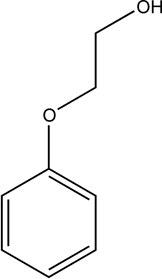 Phenoxyethynol is created by treating phenol with ethylene oxide in an alkaline medium. Each ingredient individually does not sound great, but when they react it creates a safe and effective preservative. Individually many chemicals may harm you, but together they create a beneficial product. For instance, lye alone is extremely dangerous, but after it reacts with oil and water to create castile soap it is harmless and useful. The MSDS for a pure ingredient can cause undo alarm. But as you consider other ingredients that are widely used and safe in cosmetics you will find that the MSDS sounds alarming for them as well. For instance commonly used ingredients like glycolic acid, lye, citric acid, potassium sorbate and even essential oils have MSDS warnings that could be misunderstood and deemed as too dangerous to use in cosmetics. However, we all know that these ingredients are commonly used in cosmetics.
Phenoxyethynol is created by treating phenol with ethylene oxide in an alkaline medium. Each ingredient individually does not sound great, but when they react it creates a safe and effective preservative. Individually many chemicals may harm you, but together they create a beneficial product. For instance, lye alone is extremely dangerous, but after it reacts with oil and water to create castile soap it is harmless and useful. The MSDS for a pure ingredient can cause undo alarm. But as you consider other ingredients that are widely used and safe in cosmetics you will find that the MSDS sounds alarming for them as well. For instance commonly used ingredients like glycolic acid, lye, citric acid, potassium sorbate and even essential oils have MSDS warnings that could be misunderstood and deemed as too dangerous to use in cosmetics. However, we all know that these ingredients are commonly used in cosmetics.
The MSDS sheet is designed to inform the end user of how to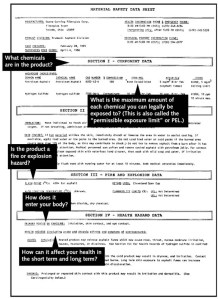 handle the ingredient properly in an undiluted form. Some companies claim that phenoxyethynol is derived from rose oil, sage oil, minerals, plant derivatives and even coconut. But honestly, phenoxyethynol is not even remotely related to these ingredients. It is, however, very safe. It is not pH dependent and not a formaldehyde releasing agent. It is paraben free. It does not react with other ingredients, air or light. It is very stable. According to the CIR Expert Panel it is safe as a cosmetic ingredient as it is currently used. It has been tested on the skin and eyes and it is non-irritating and non-sensitizing at levels of 2.2% or lower. We use phenoxyethynol at 1% or less. You may have seen phenoxyethynol used in cosmetics in conjunction with other preservatives, such as parabens. This is because phenoxyethynol is not a broad spectrum preservative by itself. Through extensive research and testing, we have found success in combining it with another commonly used and completely safe cosmetic ingredient, Edta.
handle the ingredient properly in an undiluted form. Some companies claim that phenoxyethynol is derived from rose oil, sage oil, minerals, plant derivatives and even coconut. But honestly, phenoxyethynol is not even remotely related to these ingredients. It is, however, very safe. It is not pH dependent and not a formaldehyde releasing agent. It is paraben free. It does not react with other ingredients, air or light. It is very stable. According to the CIR Expert Panel it is safe as a cosmetic ingredient as it is currently used. It has been tested on the skin and eyes and it is non-irritating and non-sensitizing at levels of 2.2% or lower. We use phenoxyethynol at 1% or less. You may have seen phenoxyethynol used in cosmetics in conjunction with other preservatives, such as parabens. This is because phenoxyethynol is not a broad spectrum preservative by itself. Through extensive research and testing, we have found success in combining it with another commonly used and completely safe cosmetic ingredient, Edta.
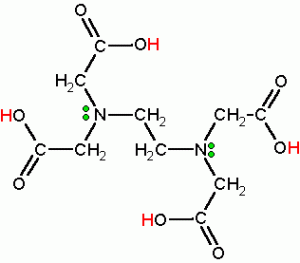 Tetrasodium Edta is derived from sodium salts. Edta is used as a chelating agent. The Greek root of the word chelate is chele which means “to claw”. The root of the word creates a great visual image of what Edta as a chelating agent does. Edta “claws” or “binds” minerals, which are necessary components for the growth of mold. For instance, Edta binds up magnesium which is necessary for mold to grow. In cosmetics, Edta not only is a great additive to create a stable product, but it also pulls heavy metals from your skin when you apply the cosmetic. Edta is widely used for chelation therapy, which is approved by the Food and Drug Administration (FDA) as a treatment for lead and heavy metal poisoning. An estimated one million people in America use chelation therapy for this purpose. The NIH National Center for Complementary and Alternative Medicine (NCCAM) is currently funding a study to prove the effectiveness of Edta chelation therapy for heart disease. Over 100,000 people per year use it in place of heart surgery. In chelation therapy, Edta is injected intravenously. Once in the bloodstream, Edta latches onto lead and other metals to form a compound that can be excreted in the urine. Edta is also used in many foods, for instance mayonnaise and soft drinks, that include ascorbic and sodium benzoate to reduce the formation of benzene (a carcinogen). It is often used in household products. In household products it is sent out into waste water and it binds up the minerals. While Edta is nontoxic in waste water it can impact the natural balance of minerals.
Tetrasodium Edta is derived from sodium salts. Edta is used as a chelating agent. The Greek root of the word chelate is chele which means “to claw”. The root of the word creates a great visual image of what Edta as a chelating agent does. Edta “claws” or “binds” minerals, which are necessary components for the growth of mold. For instance, Edta binds up magnesium which is necessary for mold to grow. In cosmetics, Edta not only is a great additive to create a stable product, but it also pulls heavy metals from your skin when you apply the cosmetic. Edta is widely used for chelation therapy, which is approved by the Food and Drug Administration (FDA) as a treatment for lead and heavy metal poisoning. An estimated one million people in America use chelation therapy for this purpose. The NIH National Center for Complementary and Alternative Medicine (NCCAM) is currently funding a study to prove the effectiveness of Edta chelation therapy for heart disease. Over 100,000 people per year use it in place of heart surgery. In chelation therapy, Edta is injected intravenously. Once in the bloodstream, Edta latches onto lead and other metals to form a compound that can be excreted in the urine. Edta is also used in many foods, for instance mayonnaise and soft drinks, that include ascorbic and sodium benzoate to reduce the formation of benzene (a carcinogen). It is often used in household products. In household products it is sent out into waste water and it binds up the minerals. While Edta is nontoxic in waste water it can impact the natural balance of minerals.
Some might wonder why we use preservatives at all. The water portion of a product is the perfect breeding ground for mold, fungus, bacteria and yeast. It is only a matter of time and all unpreserved cosmetics will go bad. What is frightening is that the product might look and smell just fine, but be filled with microorganisms that are dangerous for your skin and health. Some products may look fine on the outside, but when we run them through micro tests, the bacteria, yeast, fungus and mold count is off the chart. Other times, the signs of contamination are more obvious. Possible signs of a product going bad can be an off smell, separation and visual evidence of mold. An unstable, unpreserved product can be contaminated by the water in the product, spores in the air, even unseen contaminates in your packaging and the germs on your hands. A good stable preservative system can keep your product safe and free from these microorganisms for years.
We are often asked, “Why does brand X not use any preservatives?” Our research has been extensive. It has included testing many chemical, semi-synthetic and natural preservatives on the market today. It has also included running tests on many Brand X products.
In our research there are five possible answers to the question of how Brand X uses no preservative.
• One: is that there is a preservative system on the market with the INCI (Industrial Nomenclature of Cosmetic Ingredients) name “fragrance or parfum”, which does not disclose the ingredients and hides the preservative. They might also be using ingredients that are “multifunctional”, which does again do not fully disclose the ingredients.
• Two: there are many products on the market that failed our challenge tests and grew yeast, mold, bacteria and fungus quickly.
• Three: they do not fully disclose their ingredient lists evidenced by the fact that their product does not fail micro testing and they do not have any ingredients listed that have any preservative properties at all. That’s odd, isn’t it?
• Four: they might be using ingredients that do not require preservatives. For instance a product that does not contain water might not require preservatives, only antioxidants such as Vitamin E.
• Five: they could be using extracts in one or two different methods. Extracts in alcohol used at the right percentage create an effective preservative. Many extracts are in a propylene glycol base and preserved with parabens and urea. These used at high enough levels without fully disclosing them to the other ingredients can create an effective preservative system.
Another great explanation on Phenoxyethanol
Response to Stephanie’s Article by Dr. Alan D. Eastman http://utahstories.com/Chemical-of-the-month-Phenoxyethanol.html
Dear Richard,
I have just yesterday become acquainted with Utah Stories – what a great idea! In harmony with your stated objective of telling the undistorted truth, I’d like to make a few comments about one of the articles in your October 2009 edition. As a professional chemist, the article “Chemical of the Month,” discussing a cosmetic additive called phenoxyethanol is a near-perfect example of distorting the truth to fit a pre-conceived idea.
The author’s very first paragraph points out that phenoxyethanol is made from phenol, which itself is made from benzene, a known carcinogen. Phenol is then treated with ethylene oxide, another known carcinogen, then with an alkali. She is technically correct, but it makes as much sense to describe a very common compound around the house as being made from the reaction of a poison gas used in World War I with a substance that spontaneously bursts into flame if it comes in contact with air. That common substance is of course sodium chloride – table salt. That phenoxyethanol is made from rather scary ingredients does NOT necessarily mean that the material itself shares any of the adverse properties of its constituents, any more than table salt is a poisonous gas.
She also gives the following: “EWG Risk Score: 4” without defining where the EWG Risk Score comes from or what it means. It turns out that the Environmental Working Group is a non-profit organization that searches available databases of ingredients in cosmetics to determine the risks associated with each ingredient. The results of that search are published on line, and also used to lobby Congress to pass legislation making cosmetics safer. A look at the actual EWG report (see here) on phenoxyethanol is most enlightening. Note that the EWG is very careful to define the differences between the ingredient itself and the products in which it is used. Here is their statement:
Research studies have found that exposure to this ingredient — not the products containing it — caused the indicated health effect(s) in the studies reviewed by Skin Deep researchers. Actual health risks, if any, will vary based on the level of exposure to the ingredient and individual susceptibility — information not available in Skin Deep.
The author of your article states that phenoxyethanol’s use is limited in Japan, but somehow does not mention what the EWG documents: the chemical’s use is restricted to cosmetics – the very area in which the material is generally used in the US. What a surprise!
By the way, EWG defines their risk score of 4 (on a 1-10 scale) as meaning “moderate hazard.” Now remember that the score is for the chemical itself in its most concentrated form, not for products using that chemical. Since toxicity correlates to dosage, using such a material at the very low levels common for preservatives (phenoxyethanol’s function in cosmetics) means that the actual risks presented by this material are very, very low.
The author’s obvious goal in her article is to tout her ‘chemical-free’ product line. Yes, phenoxyethanol is a chemical, no doubt about it. But it’s a far more benign material than one would think if your only information came from Stephanie Greenwood! If she wants to sell a truly synthetic-chemical-free product line, she will have to quit using virtually all commercially-available fragrances, eschew purchasing glycerine, and go back to lard, olive oil, fireplace ashes, and herbs to make her soaps, creams, and potions.
Now, it’s clear that there are some very dangerous synthetic chemicals around, and that prudence demands caution – but to insist that we go back to the 17th century technologically in order to escape all those terrible materials is not only silly but unnecessary. If you would be interested, I would be pleased to write a short article on some of the fallacies inherent in so-called ‘chemical-free’ materials.
Finally, I’d like to point out that I’m not an industry shill: my company, GreenFire Energy, is engaged in production of energy using advanced geothermal techniques, including a novel process that creates energy while at the same time sequestering CO2! Life is fun–and good technology is good for our planet and all of us who live on it.
Yours,
Alan D. Eastman, PhD
Vice-President, Technical Development
GreenFire Energy
5698 Park Place East
Salt Lake City, UT 84121
http://www.greenfireenergy.com/
Other great comments on Stephanie’s Article
* ALL chemicals can be poisonous it just depends on the amount and consistency of use.
For example drinking an excessive amount of water with lack of urination has the potential to be poisonous and therefore deadly.
Sincerely
Christopher Morss
Organic Chemist
* Stephanie, what you are peddling is FUD — ‘fear, uncertainty and doubt’ – and playing on the general public’s lack of science education. That’s a shame, because while there can be dangers to any substance, trying to push these scare tactics as reasoned cautions is a bit much. Many of the ‘natural and organic herbs and oils’ you use are poisonous in higher concentrations or doses. Some trigger exceptional allergic reactions. And all are chemicals, be of natural origin or synthesized from natural products by man. Alluding to cyclic or polycyclic compounds as being dangerous because they are similar to others is demeaning to the intelligence of your readers. Do we damn cholesterol because it is polycyclic? Necessary for many cellular functions. Phenylalanine is a close cousin to Phenol — and a necessary amino acid for nearly all life. Ketones such as acetone are made when fats are metabolised — or synthetically as nail polish remover. This is why groups like the EWG and activists such as yourself do the public as much damage with your lack of chemical honesty as the industrial concerns do with far harsher compounds than phenoxyethanol.
Paul Vail
I hope this clears up some confusion on Phenoxyethanol.
Wash your face every night, even if you don’t wear makeup.
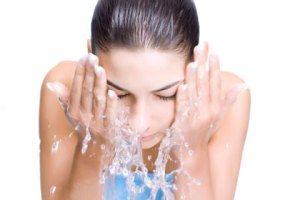 Did you know that your skin will collect pore-clogging oil all day long? And that’s only half the story. According to a study in the American Journal of Epidemiology, there is a link between air pollution and skin bumps. Researchers found that in the days after pollution levels increased, more people booked derm appointments. It becomes more and more important to wash your face every day. However, using harsh soaps and not moisturizing only enhances the damage you may cause your skin. Ojavan’s Ska Yela Facial Cleanser and makeup remover is all-natural and 93% certified Organic, is gentle to the face and helps remove the grime and pollutants. Moisturize right after with Pamea Poan Facial Moisturizer, 88% certified organic and 100% all natural. You live in your skin 24-7 feed it the best.
Did you know that your skin will collect pore-clogging oil all day long? And that’s only half the story. According to a study in the American Journal of Epidemiology, there is a link between air pollution and skin bumps. Researchers found that in the days after pollution levels increased, more people booked derm appointments. It becomes more and more important to wash your face every day. However, using harsh soaps and not moisturizing only enhances the damage you may cause your skin. Ojavan’s Ska Yela Facial Cleanser and makeup remover is all-natural and 93% certified Organic, is gentle to the face and helps remove the grime and pollutants. Moisturize right after with Pamea Poan Facial Moisturizer, 88% certified organic and 100% all natural. You live in your skin 24-7 feed it the best.
http://www.ojavanproducts.com
801-392-5896

